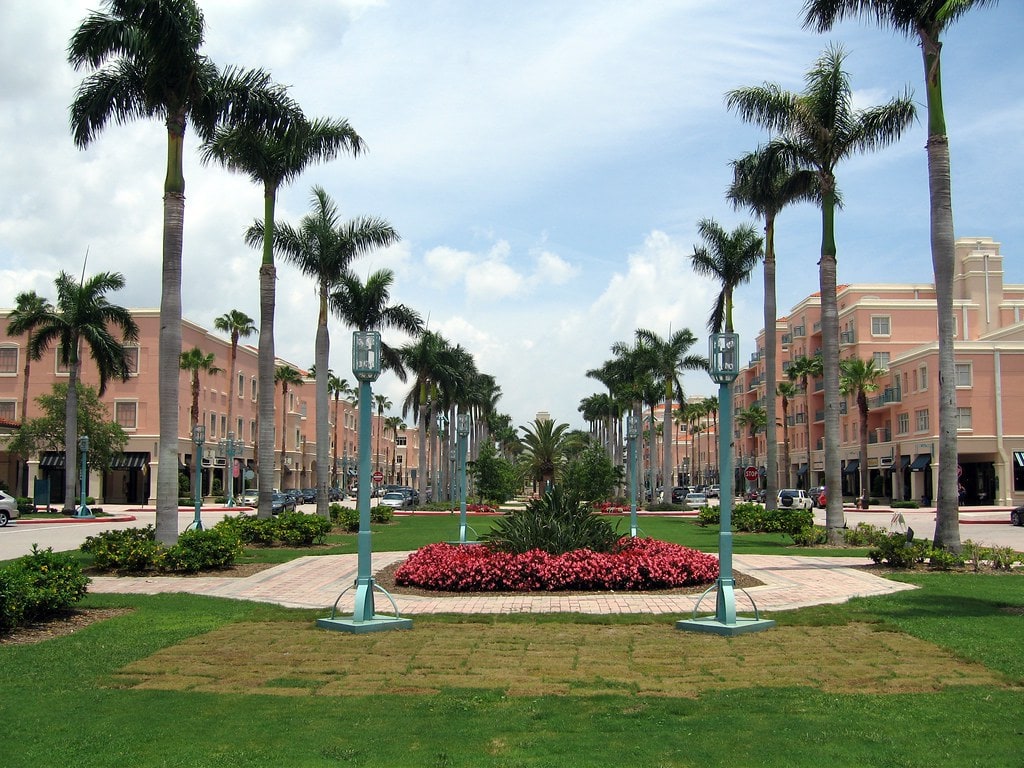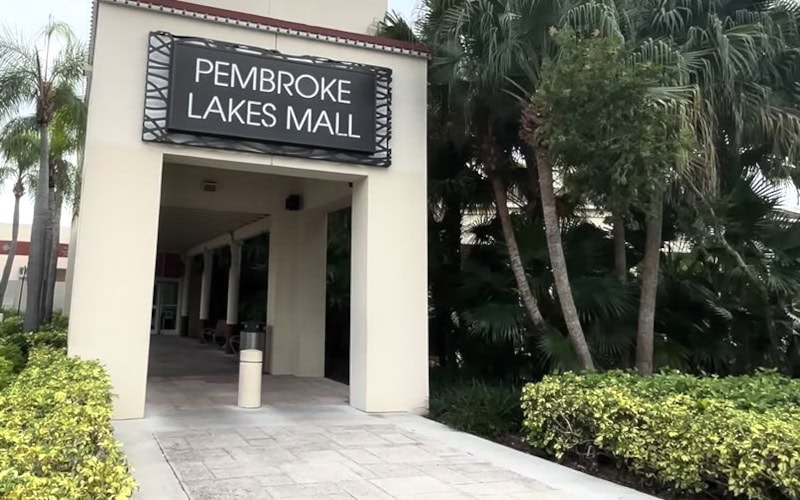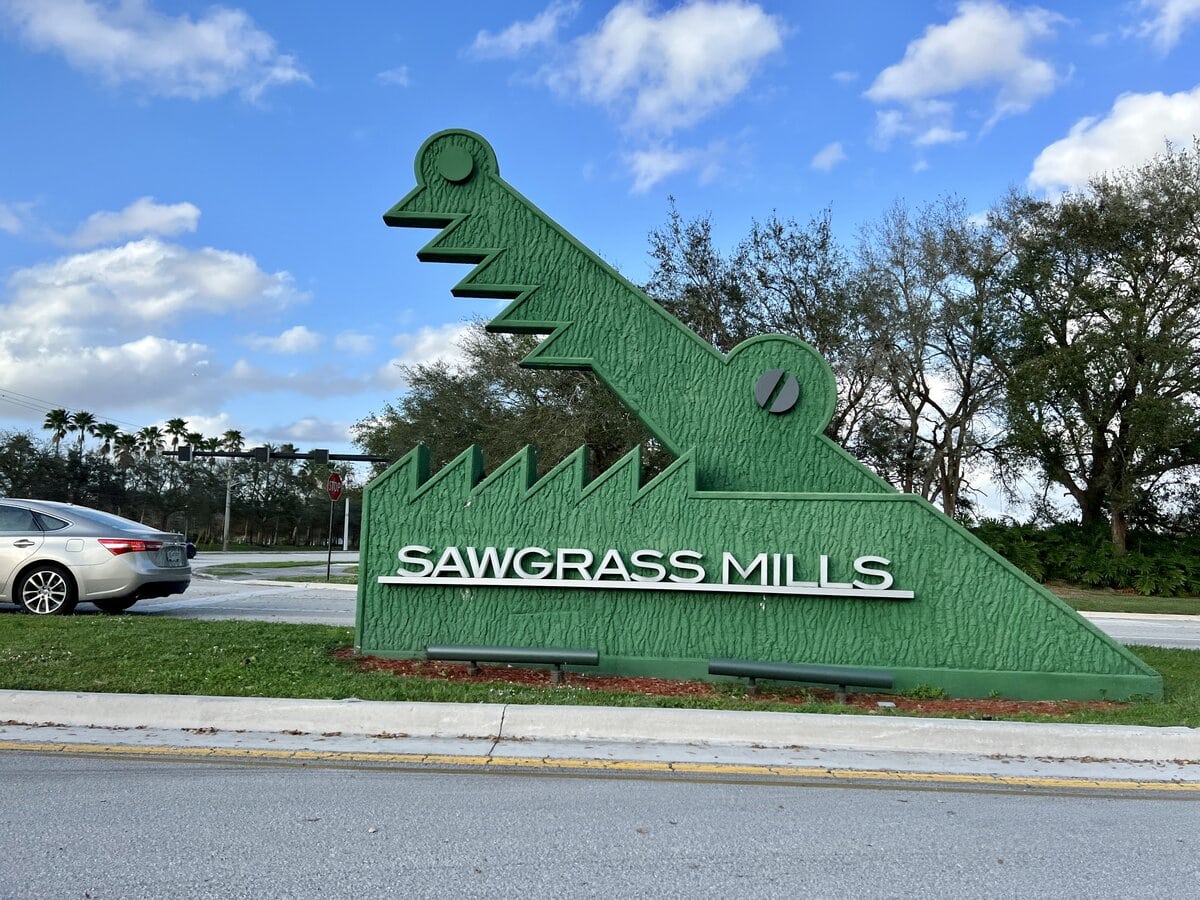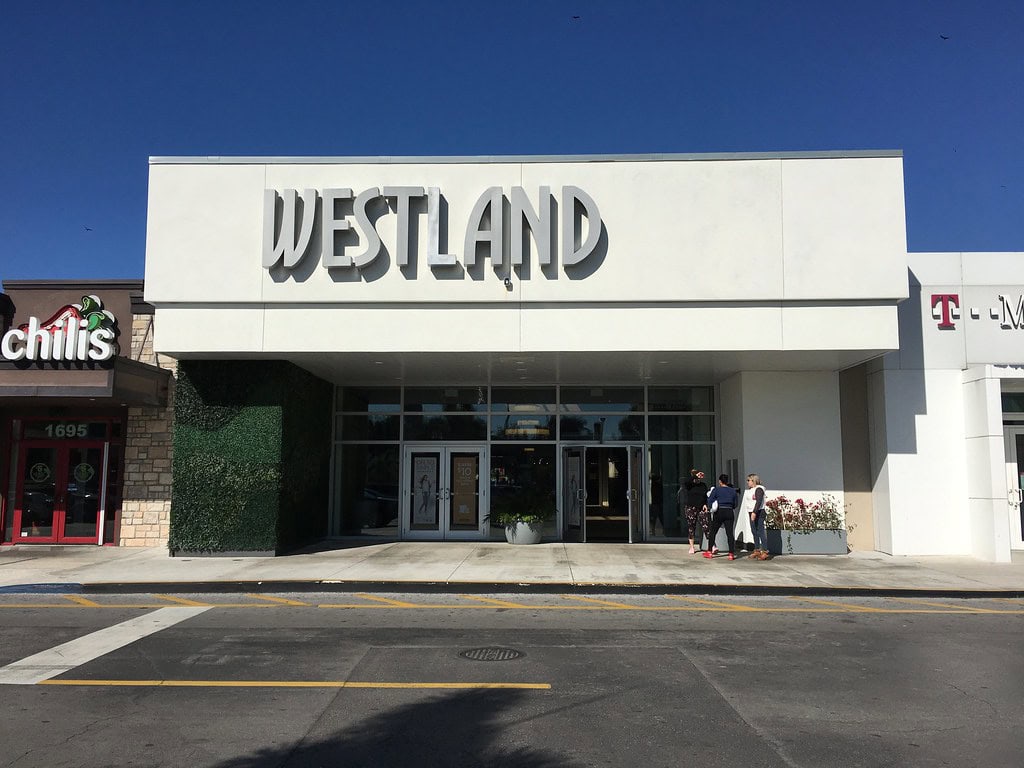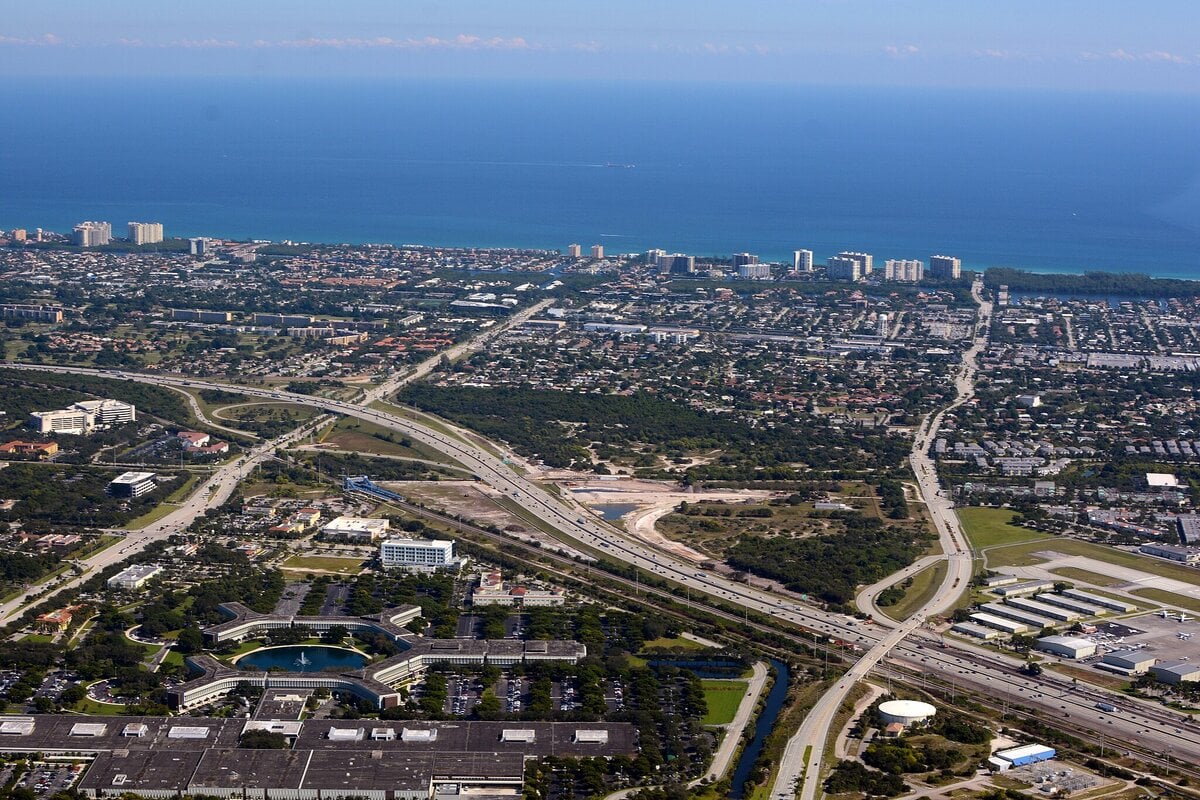Still Standing, Still Expanding
In South Florida's fast-flipping retail world, very few places stick around long enough to define their surroundings. Aventura Mall did more than that.
Since the early 1980s, it's stayed a fixture, growing while others folded, adapting without flattening its original identity.
Shoppers still walk past the shell of what used to be Sears, but they now pass Hermès and Prada too. For anyone scanning for things to do in Miami, Florida, the mall still makes the list, and not because of nostalgia.
Development Deals and Dirt Work (1983-1995)
Aventura Mall didn't start small, but it did start with something close to patience.
In April 1983, Oxford Development Company, working with Edward J. DeBartolo Corp., launched the project with 1.2 million square feet already mapped out.
At that point, Biscayne Boulevard didn't have much of a skyline.
The DeBartolo name was already known for malls.
Still, this venture came with an extra twist: Donald Soffer, part of the development group, would later split off and run the show under his new firm, Turnberry Associates.
Four anchors were part of the original setup. JCPenney opened on April 28, Sears followed on July 6, and Macy's opened on October 1, all in 1983.
Lord & Taylor opened the same year. The architecture left room for a fifth anchor, even though one hadn't yet been signed.
A drywall panel blocked off the potential entrance, just waiting for a future lease to clear.
By the time 1995 rolled around, Aventura Mall had firmly planted itself in Miami-Dade's commercial fabric.
The foundations were literal, poured for permanence, but the business structure was shifting.
Soffer's Turnberry Associates took majority control.
Simon Property Group acquired DeBartolo's minority interest the following year.
What began as a shared venture started taking on a more streamlined face, better suited to the expansions ahead.
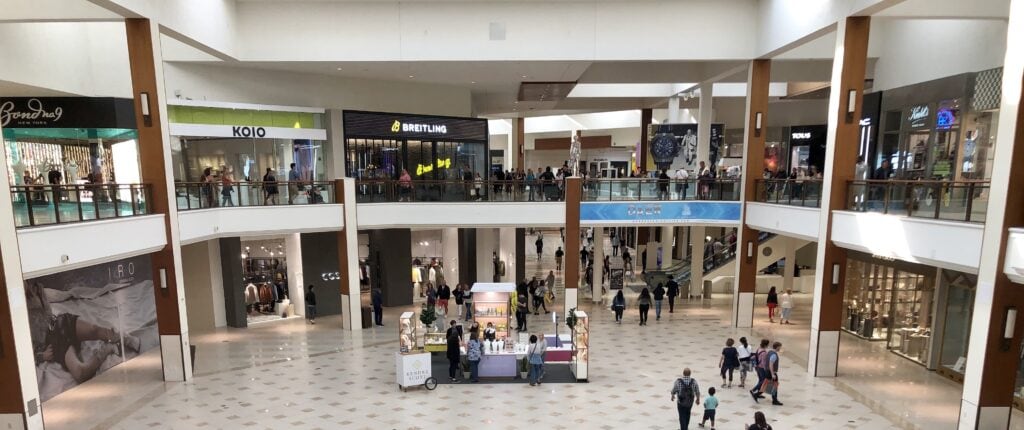
Square Footage and Structural Overhauls (1996-2006)
By the mid-1990s, Aventura Mall needed more than facelifts.
It needed more space. Construction crews broke ground in 1996 on a new southeast wing, a decision that reshaped the entire footprint.
This wasn't a side expansion for seasonal booths.
It came with a three-story atrium, a full multiplex, added restaurant zones, and two multi-level garages.
The square footage jumped, but the goal wasn't just more volume.
They were building new foot traffic patterns.
The November 1997 expansion added further retail space, and by August 1999, the mall had shifted deeper into multi-use territory.
It already had Macy's and JCPenney, but now shoppers could hit Bloomingdale's too.
That store, a new anchor, opened in 1997.
Burdines arrived in 1999 and stayed until it transitioned into Burdines-Macy's, before Macy's fully took it over in 2005.
The changes weren't cosmetic. Each new wing came with its infrastructure, and that meant rethinking traffic flow inside and out.
In late 2006, Aventura Mall underwent a $20 million renovation.
It wasn't a headline-grabber, but it mattered. Fixtures were replaced. Flooring and railings got updated.
The older 1980s-era interior finally caught up with what the newer additions had already set in motion.
By the end of this phase, the mall didn't just have more square feet on paper.
It looked different, and its management had set the tone for how the next build-outs would happen: anchored in existing revenue but shaped for what came next.
Retail Repositioning and Vertical Growth (2007-2017)
Retail was changing fast, and Aventura Mall responded with physical changes that matched the pace.
In 2008, Nordstrom opened. It wasn't a casual addition.
The chain took over a large space with three levels and added its draw to the west side of the property.
Its entrance and parking access created new movement across an already-crowded layout.
The next large-scale construction effort arrived in 2017.
A new three-level wing, totaling 241,000 square feet, opened that year.
The architecture felt newer than anything built before it.
The layout included high ceilings, glass walls, and wide gallery-like walkways.
This wing didn't just house clothing and cosmetics.
It also made room for the Treats Food Hall, which added over a dozen food concepts and became a regular destination.
During this decade, parking structures climbed as well.
The Nordstrom garage reached four stories, while the Macy's Men and Bloomingdale's garages went up to six.
The new wing's garage had seven levels. It wasn't just about getting people in - it was about keeping traffic from bottlenecking all day long.
By 2017, Aventura Mall had outgrown its early identity as a regional shopping hub.
The changes weren't subtle. AMC Theatres, which had opened on August 7, 1998, continued operating alongside luxury brands and more niche tenants.
Each renovation or addition made older wings look a little out of date, but management stayed consistent: expand first, catch up later.
It kept the foot traffic flowing, even as the national retail picture turned less certain.

Art Placement, Brand Control, and Event Real Estate (2018-2021)
By 2019, Aventura Mall had shifted from leasing space to shaping it.
The property wasn't just expanding outward - it was turning corridors into curated zones.
Arts Aventura Mall brought large-scale sculptures into high-traffic areas.
Robert Indiana's "LOVE" stood near Bloomingdale's.
Carsten Höller's 93-foot-tall slide tower cut through open sky like a steel exclamation mark.
These weren't decorations. They were part of the asset sheet.
LEVEL THREE opened in March 2019. Designed by Carlos Zapata, the 25,000-square-foot venue hovered over the new wing.
It wasn't retail. It was rental space for brand activations, fashion photo sessions, private events - whatever could be monetized by the hour.
The shift was clear: Aventura wasn't depending on sales per square foot anymore.
It was charging by the moment.
Luxury tenancy hardened during this stretch. Hermès, BVLGARI, and Armani Exchange didn't bring crowds - they brought margins.
The footprint of the old Sears, closed since 2017, stayed dormant in parts, but newer wings carried the floor load. Traffic rerouted itself.
Security became visible in May 2020 and again in May 2021 after incidents near Nordstrom.
Both drew emergency response. Both made headlines. There were no casualties, but the images stuck. Security posts multiplied.
Public areas were reprogrammed - more lighting, more camera coverage, more uniformed staff near anchor entrances.
The retail kept moving, but the tone had changed. There was less drift. Management tightened everything, from tenant selection to crowd control.
Leasing Pressure, Transit Draw, and High-Margin Tenants (2022-2025)
On December 24, 2022, Brightline's Aventura Station opened across the street.
The mall didn't build it, but it felt like it had.
Suddenly, visitors could step off a train and into a mall entry in under five minutes.
Street traffic thickened. Pedestrian lanes had to be redrawn. Garage decks built in 2017 finally ran at full capacity.
Luxury leasing accelerated in 2023. Balenciaga, Aesop, Vuori, and Dr. Martens are all locked in storefronts.
Mango and Garage followed. Floor plans shrank. Inventory turned faster. These weren't anchor stores - they were pressure points.
High yield. Low square footage. The kind of tenants who could cover rent with one weekend's receipts.
Then came Eataly. The first Florida location opens in spring 2025 - two floors near Nordstrom.
Market counters, on-site restaurants, packaged goods, all under one banner.
It's not a food court. It's a self-contained economy.
Fitness entered the mix, too. Anatomy announced in April 2025 that it would open its largest location at The Esplanade Aventura.
Twenty-six thousand square feet over two levels. It is not inside the mall, but it is close enough to share parking overflow.
Aventura Mall didn't annex the Esplanade, but it didn't need to.
The two moved in tandem - retail on one side, recovery on the other.

The Esplanade Pivot and the Rebuilt Sears Footprint (2019-2024)
In 2019, construction began on a site that once held one of the mall's original anchors.
The Sears at Aventura Mall, which closed in 2017, left behind a huge footprint.
Seritage Growth Properties stepped in with a different model.
Instead of another box, they planned an open-air complex with 215,000 square feet of retail and dining spread across six buildings.
It took until 2024 to finish, delayed by supply issues and shutdowns, but the project finally opened with a sharper, post-mall sensibility.
Designed by SB Architects and Rockwell Group, The Esplanade at Aventura runs taller than it first appears.
Some buildings reach five stories. Two levels of underground parking sit beneath the surface.
The layout doesn't echo the old mall - there's no anchor logic, no concourse model.
Instead, it's a patchwork of upscale restaurants, storefronts, and event spaces layered into a walkable grid.
Crews planted 82,000 square feet of greenery. Over 400 trees and thousands of shrubs cut through the concrete geometry.
Tenants signed leases that made the layout work harder: Pinstripes brought bowling and bocce alongside Italian dishes.
Joey Aventura filled tables with cross-continental menus.
STK, North Italia, and The Salty Donut built out their own branded zones.
The Esplanade sits next to Aventura Mall, but it's a separate play. Seritage controls it.
There's no connecting hallway - just a new node of traffic, noise, and nighttime energy where Sears used to anchor weekend errands.
The past didn't vanish, but it doesn't shape the current footprint.
🍀

